
Space Colonisation Challenges – Embarking on the journey of space colonisation presents a tapestry of challenges that span across multiple disciplines and affect the very core of our understanding of human capabilities and limitations. The vision of establishing permanent human habitats beyond Earth has been fuelled by a combination of historical aspirations and rapid technological advancements. From the musings of science fiction writers to the blueprints of engineers and scientists, the idea of humanity taking its first tentative steps towards becoming a multi-planetary species has evolved from sheer fantasy to a tangible goal.
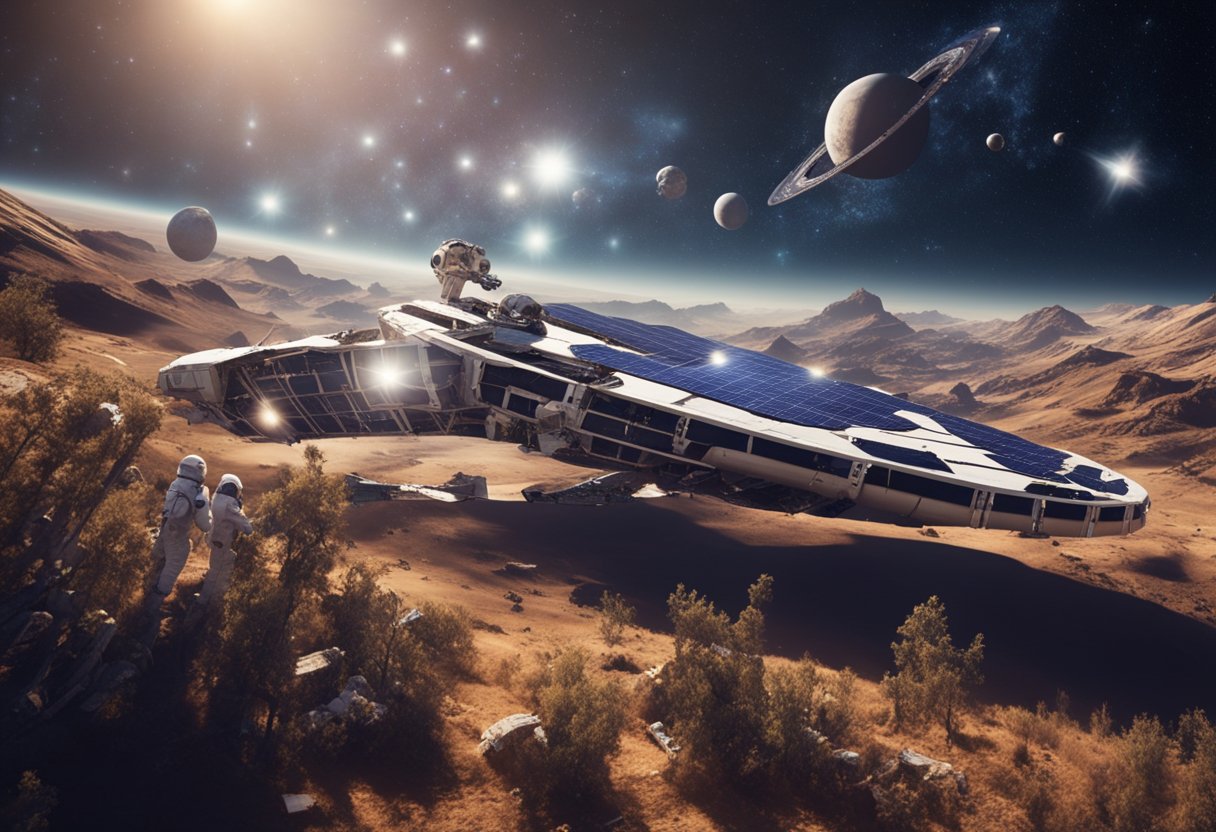
However, the reality of making space colonisation a viable endeavour is dotted with formidable barriers. Economic and business considerations must balance against the sheer cost of space travel and habitation. Biomedical and ecological impacts raise questions about how the human body will adapt to life in low-gravity environments and how to sustain life-supporting ecosystems off-planet. Moreover, legal and societal issues will emerge as communities form beyond the jurisdiction of terrestrial governance. All these challenges coalesce into strategies for long-term survival that entail building robust infrastructure and fostering cultural and community development within an extra-terrestrial context.
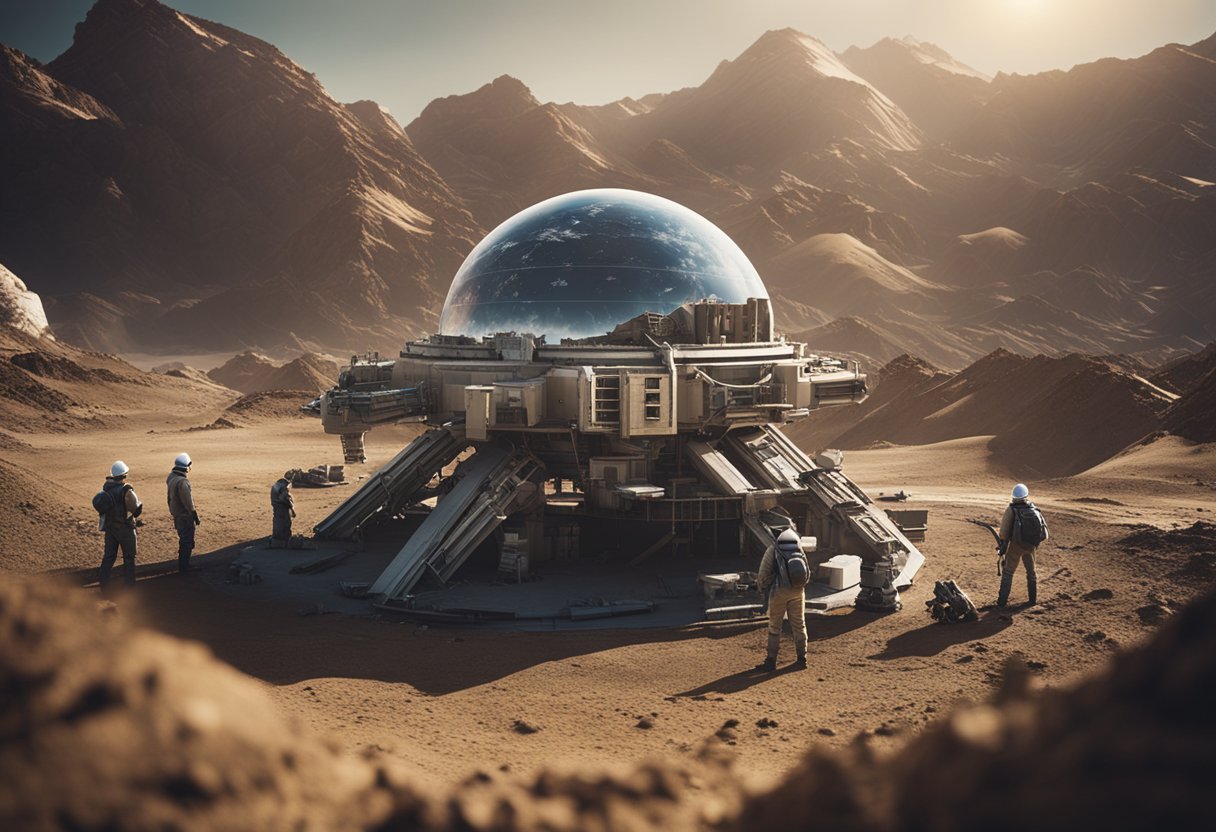
The concept of space colonisation has fascinated human minds for centuries. It was during the Cold War era that the idea accelerated with NASA‘s Apollo programme, fostering a new wave of interest in space exploration. Since then, we’ve seen a paradigm shift with entities such as SpaceX entering the field, shouldering the vision of extraterrestrial expansion alongside governmental bodies.
Elon Musk, the CEO of SpaceX, has introduced ambitious plans to colonise Mars within our lifetime. His outspoken enthusiasm has helped reinspire a global interest in space travel and colonisation. We recognise his company’s development of advanced rockets and spacecraft as pivotal moves towards making this vision a reality.
Our pursuit of space habitats extends beyond pragmatic science into a realm built by dreamers and thinkers who dare to inhabit the unknown. It’s a collective human endeavour, layered with technological, psychological, and economic challenges outlined by insightful discussions found on platforms such as SpaceVoyageVentures.com, reflecting on the intricacies of space tourism and settlement.
The historical timeline demonstrates our resilience and tenacity in pursuing the stars. From the engineers at NASA pushing the boundaries of what’s achievable with the International Space Station, to the perseverance of pioneers like Musk, it’s clear—our celestial aspirations are rooted in a deep-seated desire to expand our horizons.
Our understanding and aspirations regarding space colonisation have been shaped largely by these visionaries and institutions. We honour their legacy by continuing to forge a path towards a future among the stars.
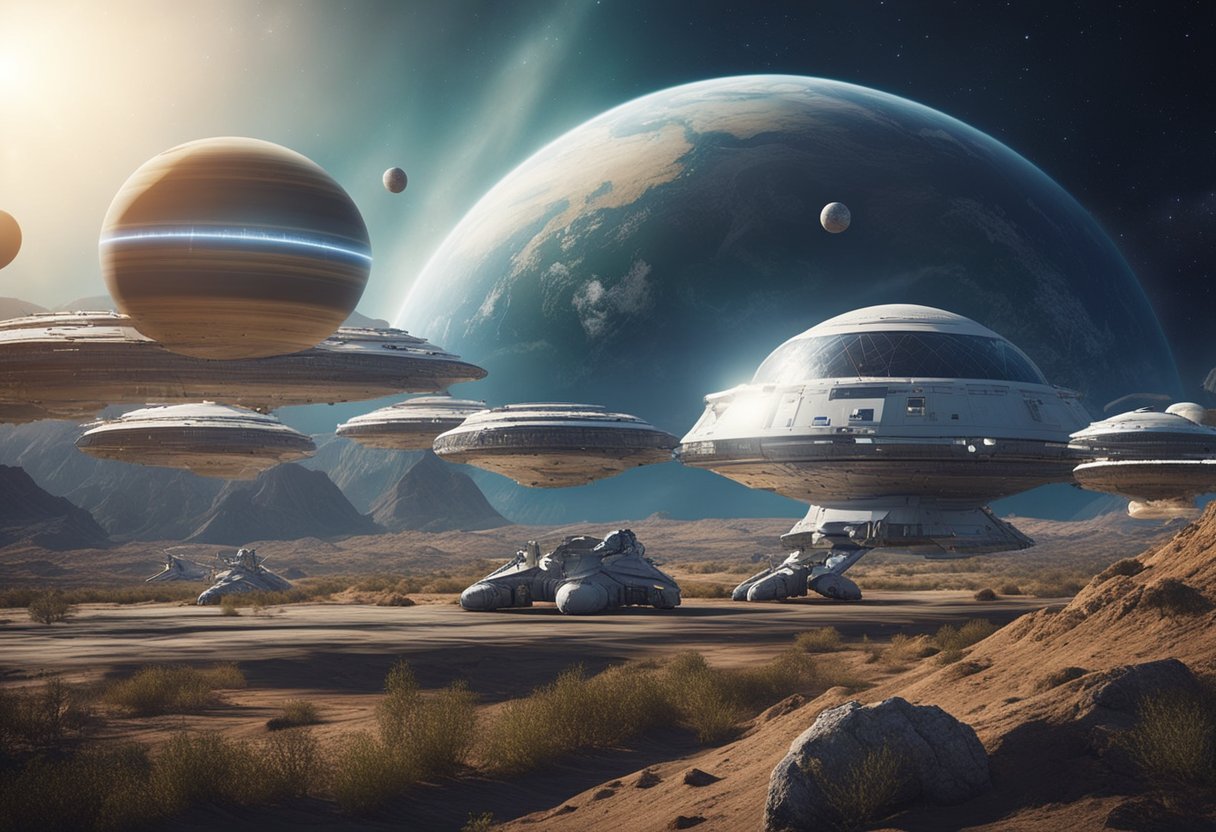
We have witnessed considerable progress in space travel technology, which is critical to overcoming the challenges of space colonisation. Our efforts to sustain human life in the cosmos rely heavily on innovation in this domain.
Artificial gravity is essential for long-term space habitation, as it helps mitigate the adverse health effects of weightlessness on the human body. By employing centrifugal force through rotating sections in space habitats, we can create simulated gravity environments. SpaceX’s Falcon Heavy has contributed to advancing our capabilities to transport the necessary materials for constructing these habitats. Designs are also incorporating AI systems, which enhance habitat operation and resource management through automation and predictive maintenance.
Innovative propulsion technology is at the heart of expedient and efficient space travel. We are now exploring beyond traditional rocketry, with fusion propulsion as a notable contender for replacing chemical rockets due to its potential for higher efficiency and speed.
Additionally, advancements in AI and robotics have been pivotal in maintaining and operating these high-tech propulsion systems during the deep-space missions that lie ahead. The development of such energy solutions is vital for both powering spacecraft and ensuring life support systems within space habitats are operational during extended missions.
In this section, we discuss the intricate balance of funding and the essential role of private partnerships in overcoming the financial hurdles of space colonisation.
Allocating sufficient funds and resources is pivotal for the progression of space colonisation. The cost of developing reliable space transportation and habitable structures is staggering. Governments have traditionally shouldered these expenses; however, fiscal constraints can impede long-term commitments. To illustrate, the economic benefits of space exploration are well-known yet the complexity of commercial space travel heightens the need for robust funding frameworks.
Commercial ventures are increasingly integral to space colonisation. Private companies have transcended beyond mere support roles, becoming key drivers in making space more accessible. Partnerships between agencies like NASA and burgeoning space tourism enterprises like SpaceVoyageVentures.com herald a new era. Such collaborations aim to mitigate the economic challenges by sharing the development cost and risks involved. Successful commercial space travel ventures stand as a testament to the potential profitability and viability of these partnerships.
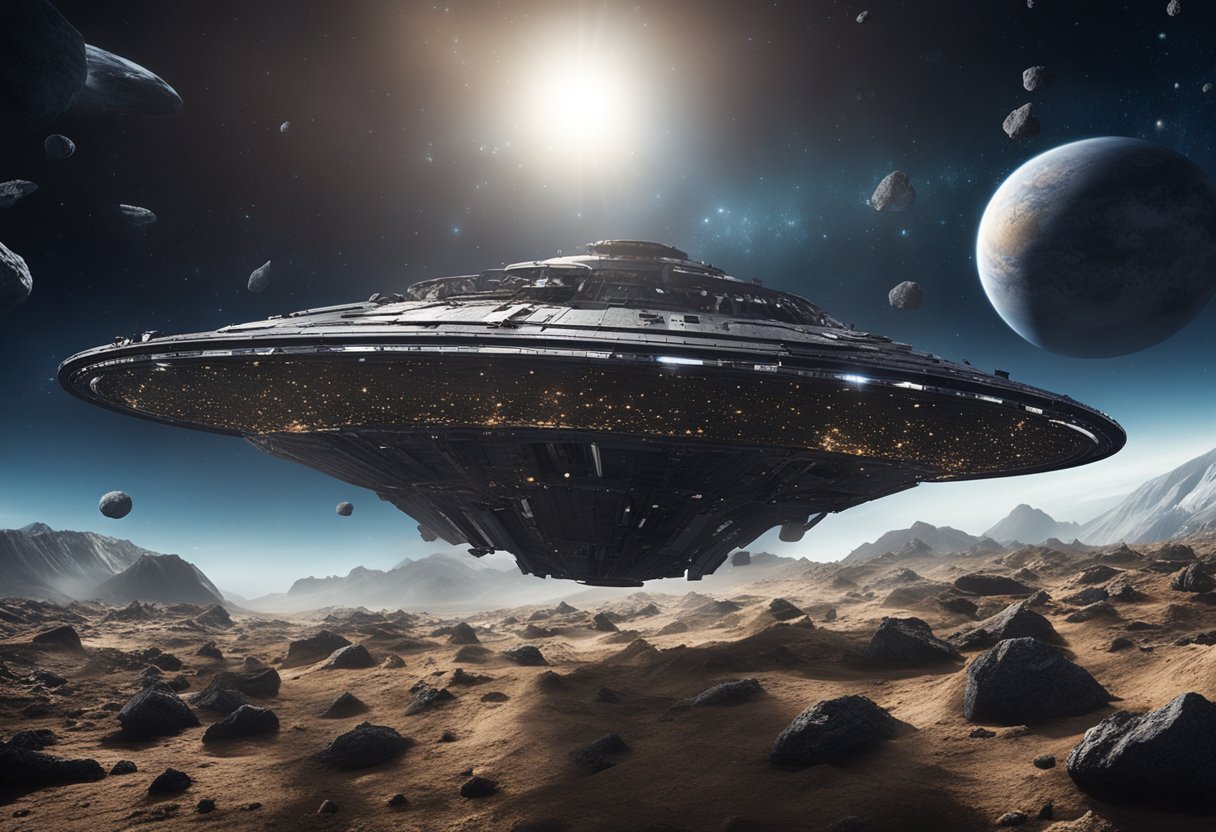
When we discuss astrophysical challenges, we’re referring to the intricate hurdles faced with celestial navigation and establishing settlements on other planets or moons. Our journey towards colonisation not only requires precise navigation but also necessitates a thorough understanding of each celestial body’s unique environment.
Navigating the vast expanse of outer space is a complex task, requiring astute knowledge in astrophysics. Our exploratory missions to places like Mars, aptly known as the ‘red planet’, demand precision to traverse the interplanetary distances. Celestial navigation is instrumental in mapping out viable trajectories to land on these distant worlds successfully.
Choosing a site for settlement is no less challenging. One must take into account various factors such as the atmosphere—or the lack thereof—and the level of radiation exposure. The moon, with its absence of a protective atmosphere, and Mars, despite having a thin atmosphere, both present significant radiation hazards. These celestial bodies are also peppered with asteroids and meteoroids that could pose threats to any established settlements.
In conclusion, astrophysical challenges in space colonisation encompass a range of issues from navigating across the darkness of space to selecting and maintaining habitable zones amidst harsh conditions like high levels of radiation and potentially unstable surfaces. Our understanding of astrophysics guides us in overcoming these obstacles as we aim to make celestial bodies like Mars and the moon feasible homes for humanity.
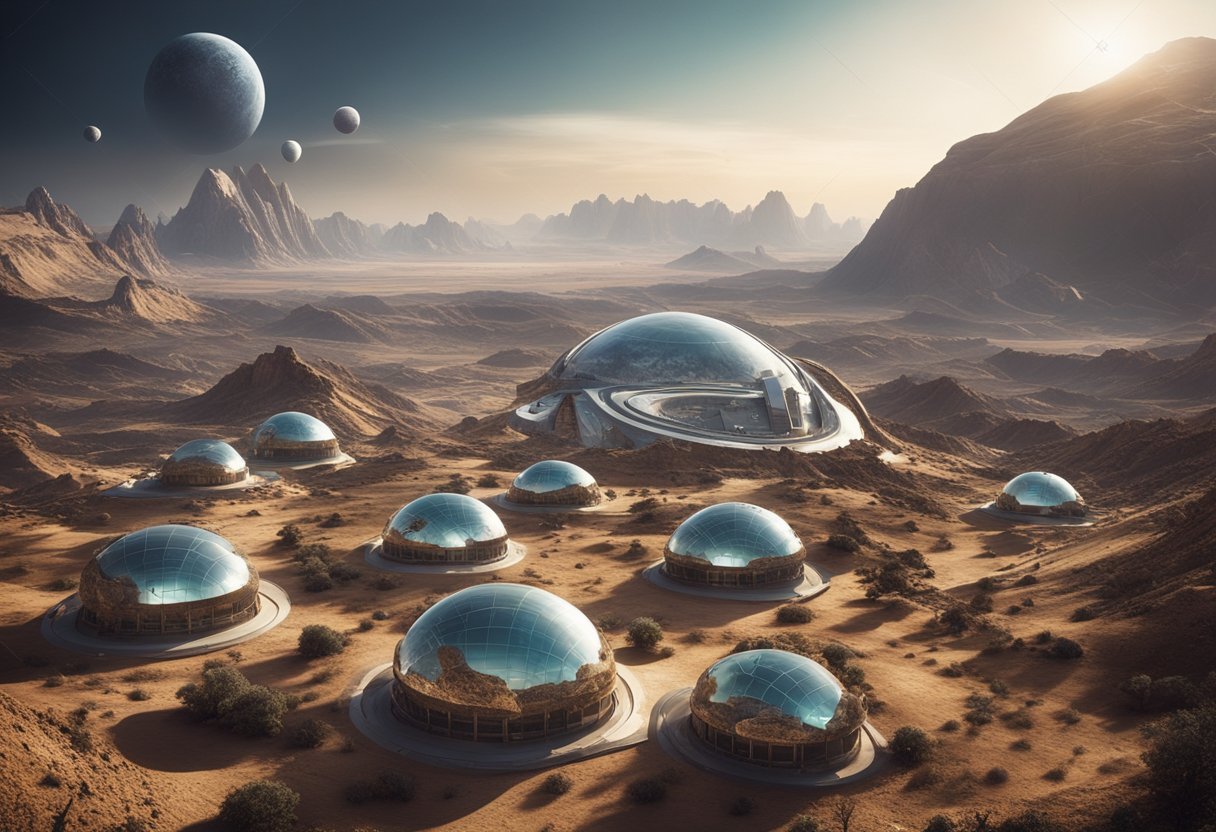
In undertaking the monumental task of space colonisation, we must address not only the biomedical challenges faced by astronauts but also the ecological implications of terraforming and creating new ecosystems.
We understand that the human body is not designed for the rigours of space. In microgravity, critical health risks such as bone loss and muscle degeneration become prevalent. Our medical strategies focus on countermeasures, ranging from exercise regimens and nutrition plans to medicine, to mitigate these effects. Sustainability in healthcare is paramount; thus, we’re developing a comprehensive life support system, ensuring a steady supply of essential resources such as air, water, and food for astronauts.
Our approach to terraforming involves the careful establishment of a sustainable biosphere. This process includes everything from managing microbial colonisation to the integration of plants and animals. Initiatives like the Proactive Inoculation Protocols ensure that we avoid accidental harm to alien environments. By promoting sustainability from the outset, we aim to create ecosystems that can eventually maintain themselves, exemplifying a balance between human needs and ecological stewardship.
As we continue to expand the possibilities of interstellar travel, with projects showcased on SpaceVoyageVentures.com, it’s crucial to generate viable medical support and ecological integration for the wellbeing of spacefarers and the environments they will inhabit.

When we consider the conquest of space, legal and societal challenges are at the forefront of our concerns. These challenges shape how we approach the development and implementation of activities beyond our planet.
The Outer Space Treaty, as the cornerstone of international space law, established that the exploration and use of outer space shall be carried out for the benefit of all countries. It prohibits the claim of sovereignty by means of use or occupation, and the placement of nuclear weapons in space. The treaty also stipulates that outer space is free for exploration and use by all nations, but this freedom brings about intricate foreign policy nuances that must be navigated by all space-faring nations.
In viewing recent initiatives, such as those detailed on SpaceVoyageVentures.com, these principles are tested. Initiatives ranging from near-term space tourism prospects to long-term colonisation concepts must align with the provisions of treaties and the expectations of the United Nations Office for Outer Space Affairs (UNOOSA). Our policies and agreements should evolve to remain relevant and enforceable as our ambitions in space expand.
Our society’s moral compass often guides the debate on space colonisation. Morality and ethics play pivotal roles in shaping public opinion and, consequently, policy. We must consider who benefits from our extraterrestrial endeavours and at what potential societal costs. As space becomes more accessible, issues such as cultural impacts, the equitable distribution of space-derived benefits, and the environmental implications of space activities on celestial bodies require thoughtful examination.
The potential impact on society encompasses both individual human experiences and collective considerations. Space tourism, while a sign of progress and technological prowess, invokes questions about accessibility, prioritisation of resources, and the responsibility to protect the integrity of space environments. We must continuously engage in this essential dialogue to ensure that our forays into space remain responsible and beneficial for all humanity.
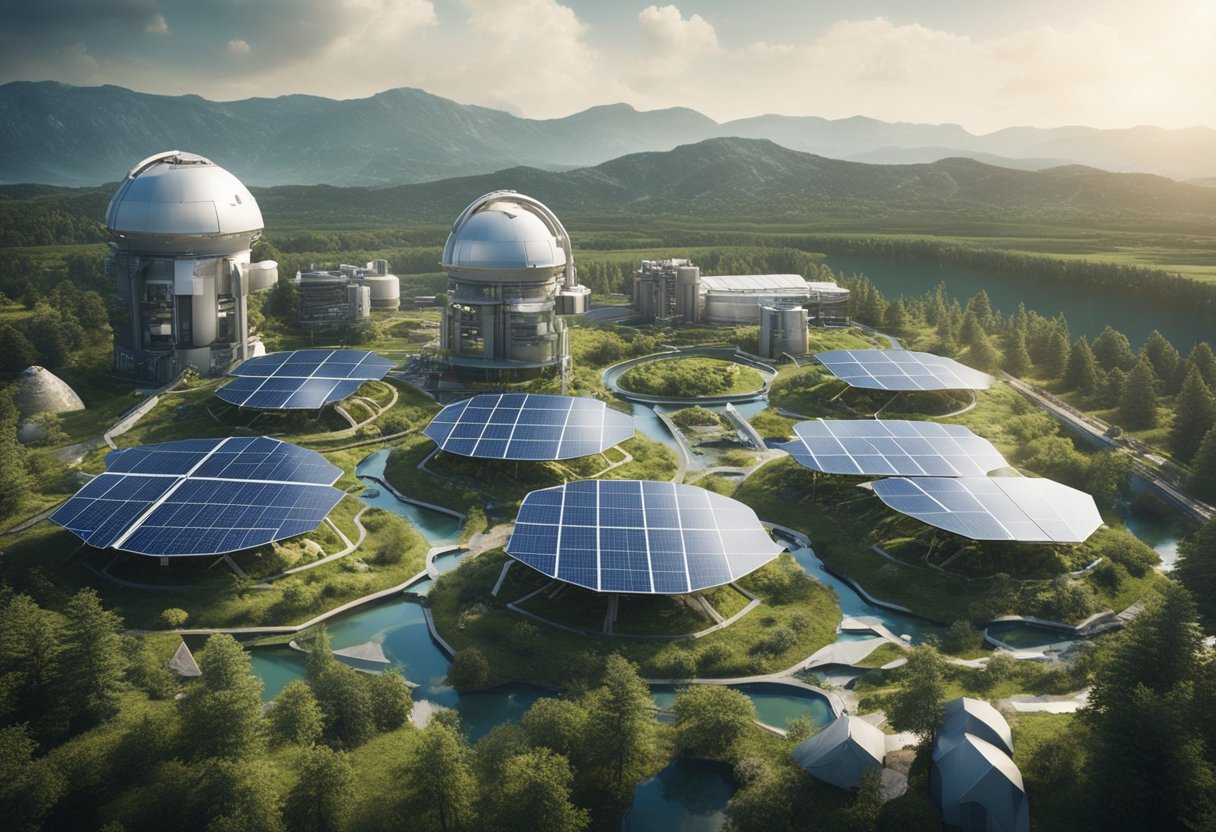
In preparing for the era of space colonisation, addressing the provision of sustainable resources and energy becomes paramount. Successful long-term survival hinges on creating self-sufficient habitats that minimise existential risks while maintaining a stable biosphere.
We must focus on establishing reliable sources of food, water, and energy to secure a sustainable future in the harsh environment of space. Sustainability, in this context, is not just an environmental concern but a necessity for survival.
Food: Implementing advanced hydroponics and aeroponics systems allows for the efficient production of crops in controlled environments. With these systems, we can grow a variety of produce rich in essential nutrients and nitrates, which are critical for both plant growth and human health.
Water: Recycling and purifying water will be a continuous process. Innovative water recovery systems that can reclaim nearly 100% of the water used are vital. This includes moisture from the air, greywater from sinks, and even water reclaimed from human waste.
Energy: Utilising renewable energy sources is crucial. Solar power stands out as an abundant resource that can be harnessed through solar panels on spacecraft and habitats. In the absence of atmospheric interference, solar panels can operate at higher efficiencies in space.
To cement our place among the stars, we must integrate these strategies into our design and operation of extraterrestrial habitats. We are actively following the advancements and documenting potential space tourism opportunities at SpaceVoyageVentures.com, which showcases our commitment to this goal. Sustainable resource and energy management underlies our vision for humanity’s extraterrestrial future.
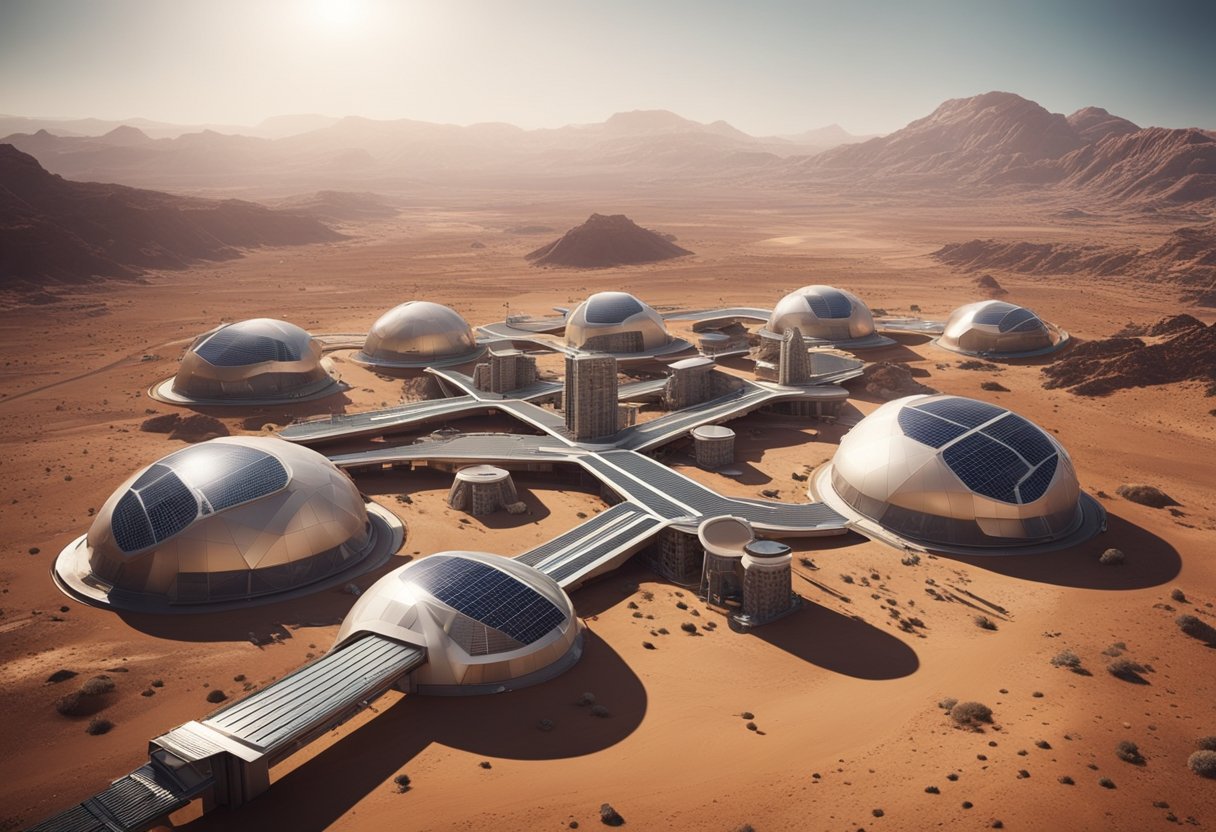
In addressing the monumental task of space colonisation, we find ourselves confronted with a unique set of challenges in constructing sustainable habitats. The hostile environments of celestial bodies necessitate innovative approaches to both building and the procurement of raw materials.
Building on Mars and the establishment of a Moon base require robust structures to shield us from extreme temperatures, radiation, and potential meteor impacts. Space habitats must be designed to accommodate the weak gravity, scarce water, and the fine particulate matter of lunar and Martian soil that can infiltrate and damage equipment. Nanotechnology offers sophisticated solutions with promising materials that could potentially self-assemble or self-repair, minimising the need for external maintenance.
For manufacturing necessities on-site, metal ores on the Moon and Mars can be utilised to extract essential construction materials, reducing the dependency on Earth for supply missions. Establishing facilities to process these raw materials will involve advanced techniques, possibly including 3D printers capable of working with regolith – the loose, fragmented material covering solid rock. We must further explore the practicality of scaling these operations to support larger colonies and the impact on the surrounding extraterrestrial environment.

As we venture into the realm of space colonisation, the success of these endeavours hinges not only on technological advancements but also on the careful crafting of interstellar societies. Our ability to develop vibrant communities with a rich cultural landscape will be fundamental in establishing a sustainable human presence beyond Earth.
Creating interstellar societies within a colony requires a delicate balance of fostering a sense of community and maintaining genetic diversity. It’s imperative for us to construct a social fabric that supports a multi-planetary human presence, where cultural values and collective goals are harmonious with the unique challenges of living in space.
Community Integration: A cohesive community is essential for the well-being and longevity of space colonies. Activities and cultural practices that promote unity will be central to overcoming the physical and psychological distances from Earth.
Cultural Heritage: Emphasising the import of Earth’s diverse cultural heritage aids in creating an environment where traditions can evolve to reflect the new surroundings.
Stewardship and Governance: With the establishment of a space colony, transparent and equitable governance models adapted from the best practises on Earth, but tailored to the specific needs of space settlements, will be fundamental.
Genetic Considerations: To ensure the resilience and continued evolution of human societies in space, careful consideration must be paid to genetic diversity. This is vital for the health and long-term survival of space-faring communities.
Education and Continuity: Sustaining a multi-planetary human presence necessitates a robust education system that both preserves knowledge from Earth and integrates new learnings from life in space.
In our journey to inhabit new worlds, we must remember that our communities are more than just physical structures or logistical arrangements; they embody our spirit and resilience. As we look to the stars, websites like SpaceVoyageVentures.com serve as beacons, illuminating the path to not just the scientific and technological, but also the sociocultural dimensions of becoming an interstellar species.
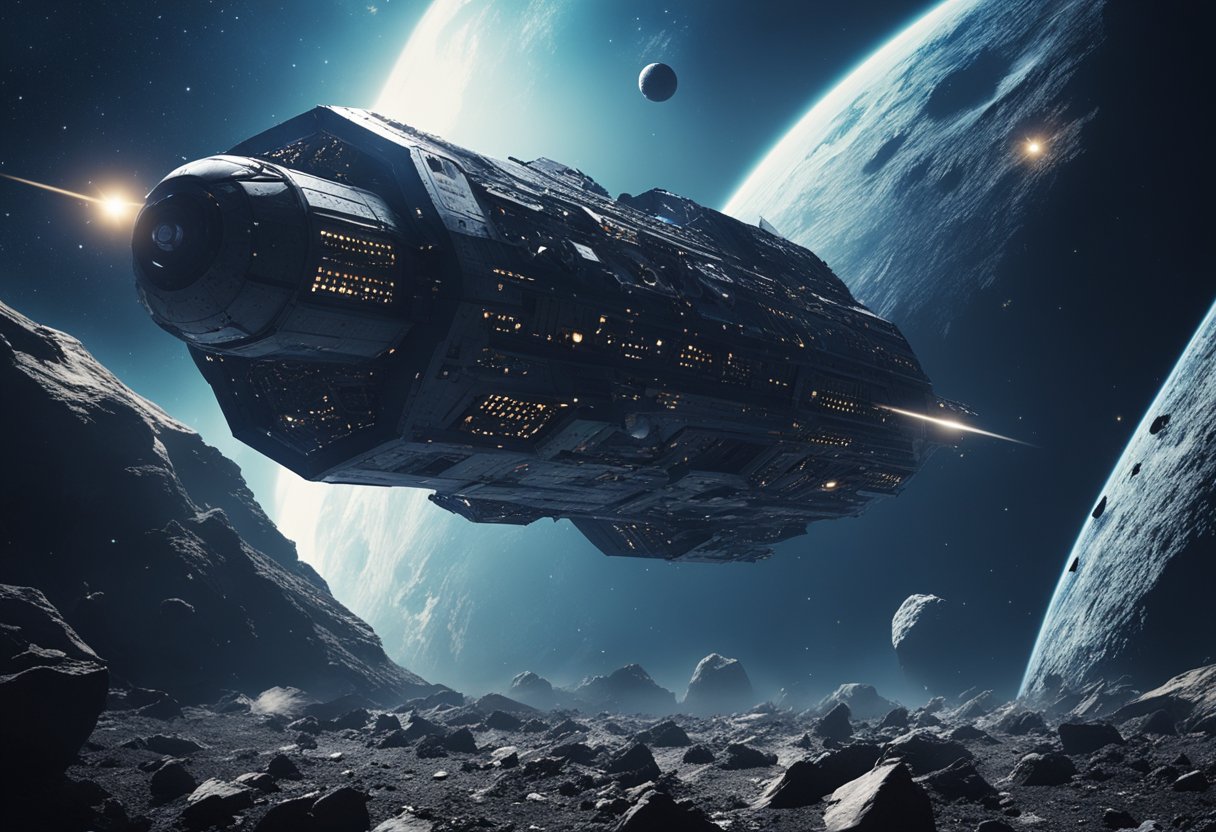
In our endeavours to extend humanity’s reach beyond Earth, we face substantial challenges and risks ranging from technical to human factors. These span the physiological to the economical, each requiring careful consideration and mitigation strategies.
Cosmic Radiation: One of the gravest concerns for astronauts is exposure to cosmic radiation, which can cause severe health issues, including increased risk of cancer. Shielding technology is under development, but it remains a significant barrier to safe long-term habitation in space.
Cost: The financial requirements for space colonisation are monumental. Each phase, from research and development to launch and establishment of sustainable habitats, involves billions of pounds, often with uncertain return on investment.
Extermination Risks: One oft-cited justification for space colonisation is the survival of humanity in the event of Earth-bound extinction events. However, the practicality of establishing off-world settlements as a safeguard remains highly conjectural.
By addressing these challenges head-on, we aim to chart our course through the cosmos with determination and prudence. Our focus remains on achievable goals, grounded in current capabilities while striving for continuous advancement.
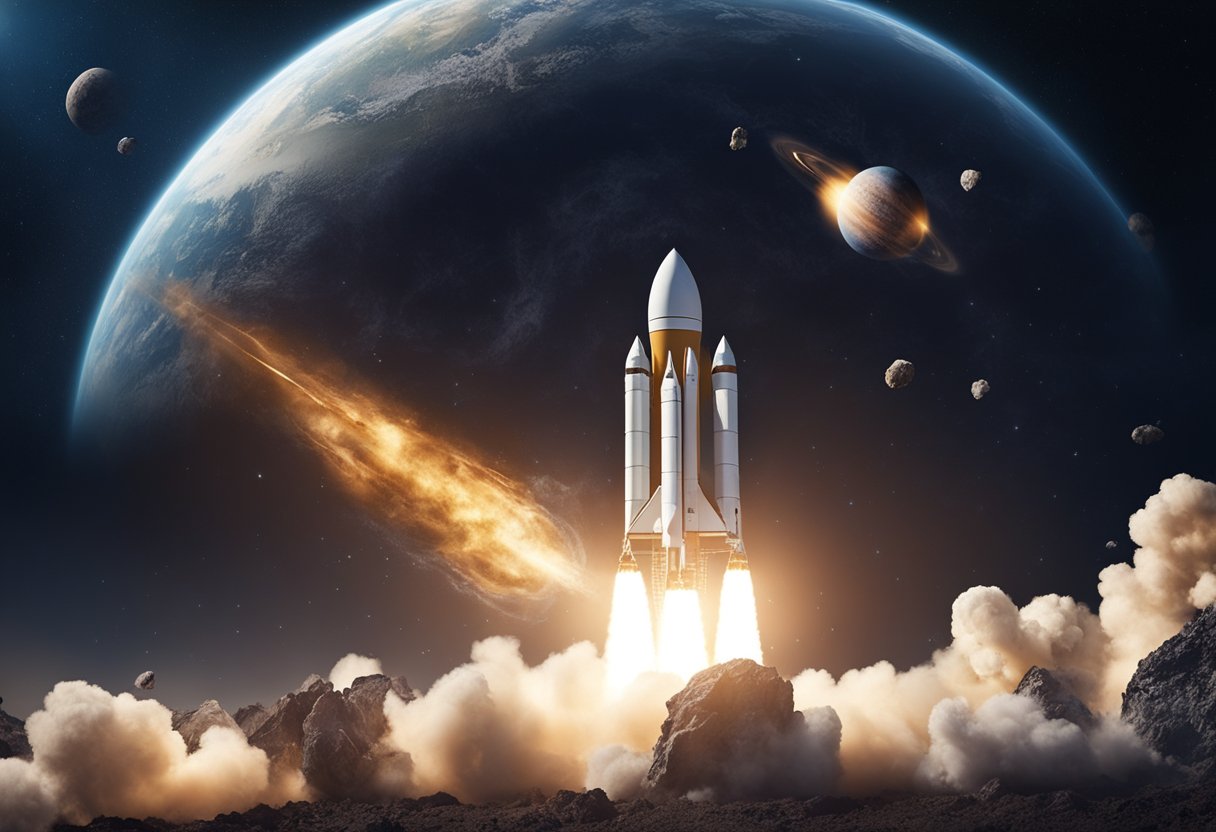
In this section, we explore some of the most pertinent queries about the challenges of colonising spaces beyond Earth. We examine the risks, necessary technological advancements, and the impacts on human health and psychology, providing clear and factual answers.
The major risks in the colonisation of other planets include exposure to high levels of cosmic radiation, the potential for psychological distress due to isolation, and the physical effects of living in microgravity. There are also technical challenges in creating reliable life support systems and sustainable habitats.
Cosmic radiation can damage DNA and increase the risk of cancer, posing a serious threat to astronauts and future space settlers. Without Earth’s atmosphere and magnetic field to provide protection, advanced shielding and medical interventions are necessary to mitigate these dangers.
For sustainable living in space, we need technologies that can create self-sufficient habitats, such as advanced recycling systems for air and water, and efficient energy sources. Structures that simulate gravity and protect against radiation are also essential.
Microgravity leads to muscle atrophy, bone density loss, and fluid redistribution in the body. To counteract these, astronauts must engage in regular exercise and may benefit from habitats designed to simulate Earth-like gravity conditions.
Creating a closed-loop system that recycles water and air is vital for sustainability. The development of systems to efficiently recycle waste and produce food is also paramount. Research on closed ecological systems, such as bio-regenerative life support, is crucial.
Strategies include designing living spaces that help reduce feelings of confinement, providing communication tools to maintain connections with Earth, and ensuring diverse and engaging social environments. Psychological support services and activities that promote crew cohesion are fundamental in tackling these unique challenges.